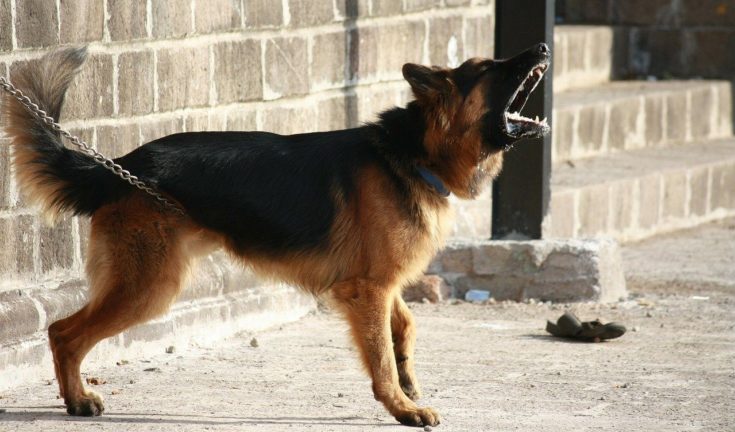Dog Bitten by Snake? Our Vet Explains the Signs, Treatment & Prevention
Updated on
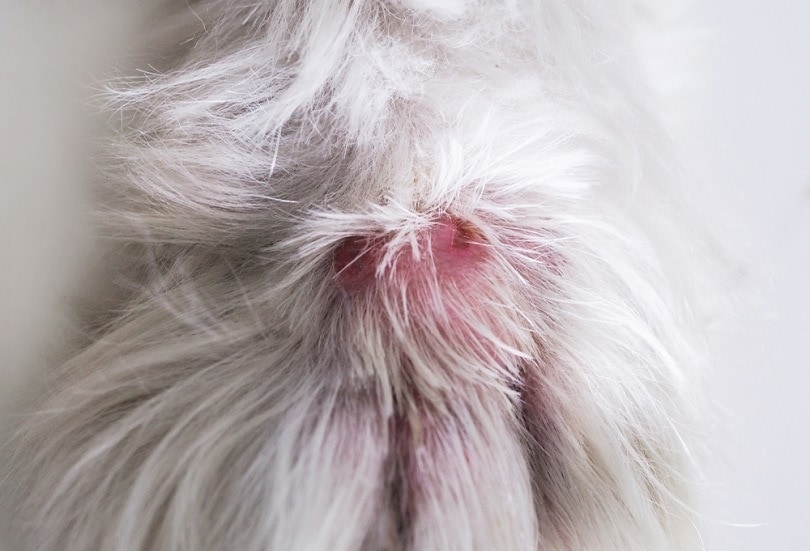
As the weather warms up, snakes tend to become more active and the risk of snake bites increases for both humans and animals alike. Approximately 150,000 animals are bitten by venomous snakes every year in the United States and most of them are dogs and cats. A bite from a venomous snake is a true emergency. Immediate veterinary attention is required to give your dog the best chance of survival. Non-venomous snake bites, though far less deadly, still require a visit to the vet’s office as they cause painful swelling and may become infected.
- Elapids – The Coral snake (Southern US) is the only species in the US
- Crotalids (Pit vipers) – Rattlesnakes, Copperheads, and Cottonmouths (Water Moccasins) are the most commonly encountered species
It is important to know which species of venomous snake are found within your local area, or the area you plan to visit with your dog. In this article, we will discuss what to do in the event of a snake bite, what to expect if your dog is bitten, as well as snake safety and prevention.
If your dog is bitten by a snake, immediately go to your nearest emergency vet. If possible, start emergency first-aid on the way. Then carefully follow all of your vet’s instructions. Keep reading to learn more!
 Are Snake Bites Deadly to Dogs?
Are Snake Bites Deadly to Dogs?
Unfortunately, they can be depending on the species of snake. Many of the venomous snakes found in the US can kill both dogs and cats. How deadly a snake bite is depends on the species of snake and the type of venom they carry. Different venoms have unique toxic effects and will affect the body in different ways.
The amount of venom received during the bite will also affect the outcome and will vary depending on the size and maturity of the snake. There is also the possibility of a dog receiving a ‘dry bite’, where the snake bites without injecting venom. Dogs are most commonly bitten on the head and neck, however, bite wounds over the chest and belly tend to be more deadly. Current research suggests that anywhere between 1-30% of dogs die after being bitten by a venomous snake in the US.
If your dog has been bitten by a non-venomous snake, the most common clinical signs or symptoms are bruising and swelling. The bite site may also be painful and there is a risk of an infection developing, so it’s important that a vet examines, cleans, and treats the wound as soon as possible.
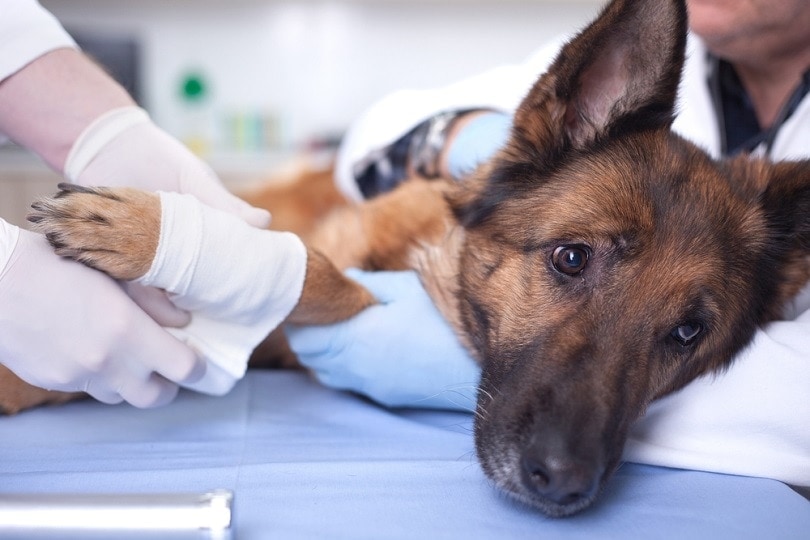
 What to Do if Dog Was Bitten by a Snake
What to Do if Dog Was Bitten by a Snake
1. Take your dog immediately to your nearest emergency vet.
If there is any possibility that your dog has been bitten by a venomous snake the best thing to do is seek urgent veterinary attention. If you can safely call your veterinarian on the way this is helpful as they can set-up and prepare for your arrival.
Emergency centers with 24-hour care are usually best equipped to deal with venomous snake bites. Your vet may ask you over the phone if you could identify the species of snake that bit your dog. Never attempt to catch or kill a venomous snake as you may be bitten in the process – it’s far safer to call Animal Control.
2. Start emergency first-aid on the way.
There are some steps you can take to reduce the effects of the venom. However, the most important thing is getting your dog to a vet as soon as possible, so these steps should only be utilized on the way if it won’t slow you down.
- Carry your dog to the car if you can safely do so
- Try to keep your dog calm and quiet
- Try to keep the bite site below the level of the heart to reduce blood flow to the area. This works best on extremities, for example, a snake bite on the paw.
- Consider using a basket muzzle if your dog is in pain, as they may bite when moved
- Apply compresses or bandage the area
- Try to suck out the venom
- Waste time trying to find bite wounds if they aren’t obvious
- Give Benadryl (diphenhydramine) – it’s not effective against the effects of snake venom
3. Follow discharge instructions carefully.
It’s important to follow all instructions given to you by your veterinarian when your dog arrives home after being treated for a snake bite. Your dog will usually require strict rest and careful monitoring for the next two weeks.
These steps are much more urgent and relevant if your dog is bitten by a venomous snake. When dealing with non-venomous snake bites, it’s still important to contact a veterinarian so the bite wound can be treated appropriately. Take care lifting your dog into the car as they may be painful.
 What Are the Signs of a Snake Bite on a Dog?
What Are the Signs of a Snake Bite on a Dog?
In some cases, pet owners witness their dogs being bitten by or interacting with snakes. You might also find a dead chewed-up snake on your property, or notice your dog showing the telltale signs.
Don’t assume that because there are no obvious wounds or puncture marks that your dog hasn’t been bitten. It can be difficult to find a snake bite through your dog’s fur. In some cases, you may be able to see small puncture wounds from the snake’s fangs and the wound may be swollen or bleeding.
Venomous Pit Viper (Crotalid) species such as Rattlesnakes, Copperheads, and Cottonmouths tend to cause damage to the surrounding tissue when they bite. The skin will often turn dark purple and ooze dark bloody fluid within an hour.
Clinical signs or symptoms of a venomous snake bite will vary depending on the type of snake that bit your dog. These signs can appear in less than an hour of receiving the bite but can also have a delayed onset. For instance, the toxic effects from Coral snake venom can take up to 18 hours to appear in some cases.
- Sudden weakness or collapse
- Muscle tremors, shaking, or twitching
- Vomiting and diarrhea
- Weak and wobbly back legs
- Drooling or foaming at the mouth
- Red or bloody-looking urine
- Dilated pupils
- Paralysis
- Bleeding or oozing from the bite site
Depending on the species of snake, the toxic effects of their venom act on different body systems. Pit viper venom from species like Rattlesnakes and Cottonmouths causes tissue damage (necrosis), destruction of red blood cells (hemolysis), bleeding (coagulopathy or blood-clotting disorders), and can also affect the nervous system, heart, lungs, and kidneys. Elapid venom from Coral snakes tends to mostly affect the nervous system.
Bites from non-venomous snakes mainly result in swelling, pain, and bruising at the bite site. They are at high risk for becoming infected which if left untreated can spread to the bloodstream causing serious illness (sepsis).

How Do You Treat a Snake Bite in Dogs?
Venomous Snakes
Venomous snake bites are a true emergency, and the appropriate treatment will depend on the species of snake. Your veterinarian will perform extensive diagnostic testing to confirm, assess, and monitor the effects of snake venom. This may include blood, urine, and coagulation (blood-clotting) tests.
In most cases, supportive care in hospital will be required to treat a venomous snake bite.
- Intravenous fluid therapy (IV drip) to treat shock and low blood pressure
- Pain relief
- Antibiotics to treat any infection
- Oxygen therapy
- Giving antivenom or antivenin to neutralize snake venom
- Placing your dog on a ventilator if they can’t breathe properly. The effects of some snake venoms can paralyze the muscles of the respiratory system.
- Performing a blood transfusion in the event of blood loss from a clotting-disorder (coagulopathy).
In most cases, your dog will need to stay in hospital for at least 24 hours while the effects of the snake venom are treated. The bite site will also be cleaned and disinfected to try and control infection and tissue damage.
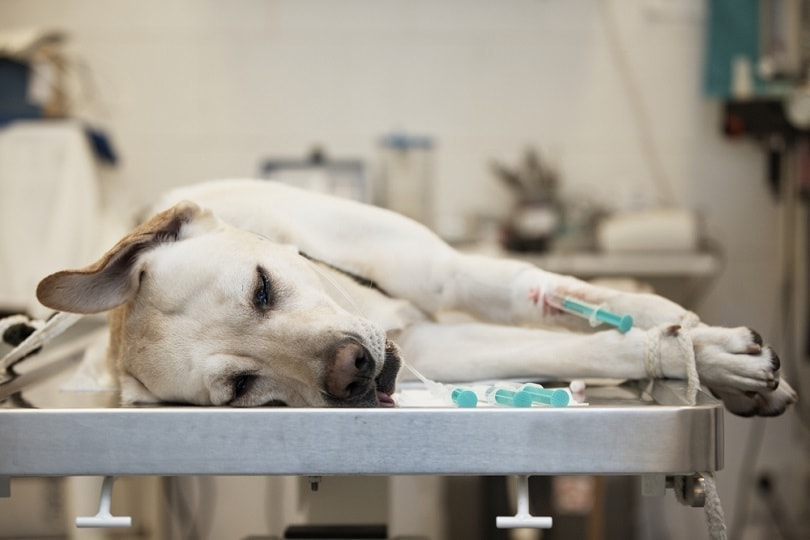
Non-venomous Snakes
When it comes to non-venomous snake bites, your vet will carefully clean and disinfect the wound and will often prescribe antibiotics to prevent infection, as well as pain relief. Treatment is similar for a ‘dry-bite’ from a venomous snake, however, your vet will likely keep your dog in the hospital and monitor them closely for up to 8-12 hours to make sure they don’t develop any signs.
 FAQs
FAQs
How much does it cost to treat a dog for a snake bite?
The cost of treatment for a snake bite is extremely variable depending on how long your dog stays in hospital and the treatment they require. Antivenom is expensive and can cost between $400-$1000 per vial, so your vet bill can easily add up to over $1,500-$2,000 quite quickly. That’s assuming you could get your dog straight down to the vet and they respond well to antivenom with no major complications.
For cases of ‘dry-bites’ or bites from a non-venomous snake, you might expect a bill of around $100-$200, but again this will vary depending on the clinic and the size of your dog (medications for large and giant dogs can be more expensive).
If your dog is seriously unwell and requires multiple days of intensive care, the bill will be considerably higher to cover these costs. Making sure your pet is insured with a policy that covers incidents like snake bites is highly recommended.
How to treat a snake bite at home?
In a word, don’t. If your dog has been bitten by a venomous snake take them immediately to your nearest emergency vet for treatment. There are some first-aid practices you can perform on the way (see above). Don’t give your dog Benadryl (diphenhydramine) which has become a popular home remedy for snake bites – it’s essentially ineffective.
How long will a dog survive after a snake bite?
The prognosis for a snake bite depends on many factors including the type of snake, dose of venom received, size of the dog, location of the bite, and how quickly veterinary treatment was initiated.
If treated effectively and the dog recovers, they usually do well, however, some cases of Pit Viper (Crotalid) bites may have tissue damage that can take months to resolve. It is important that you carefully follow all discharge instructions from your vet when your dog goes home. Studies have suggested that between 1-30% of dogs bitten by venomous snakes in the US die.
Can dogs survive a snake bite without treatment?
Non-venomous snake bites have an excellent prognosis for survival and require treatment simply to clean the wound properly and prevent it from becoming infected, which can make your dog sick.
The prognosis is similar for a ‘dry-bite’ from a venomous snake, however, there is no way of knowing if venom has been injected until it’s too late. If your dog has been bitten by a venomous snake, the best thing to do is to seek urgent veterinary attention. Cases that receive treatment within 2 hours tend to have a much better prognosis for survival.
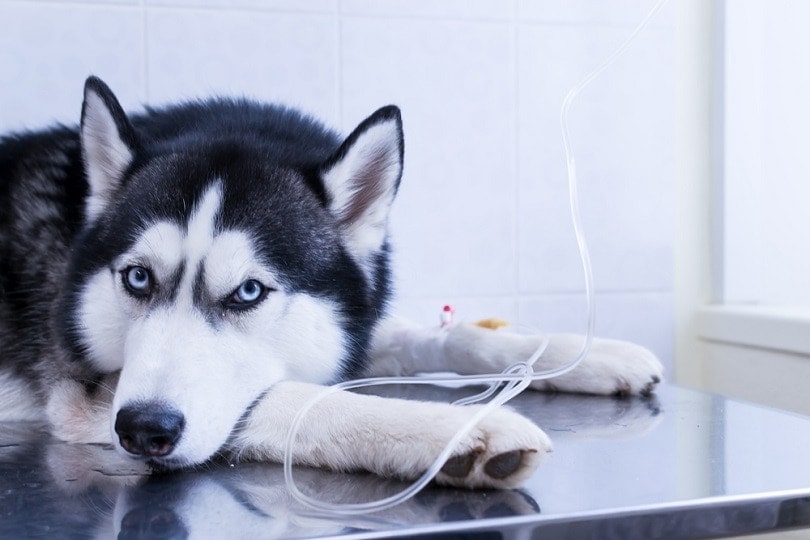
How can I prevent my dog from getting bitten by a snake?
Snakes will usually try to avoid humans and dogs alike and will bite as a defense mechanism when threatened. Prevention is much better than cure, so consider the following tips to try and reduce the chance of your dog being bitten.
Keep your dog on a leash and stick to designated pathways, especially in the warmer months. At home, keep your lawn short and make sure there is no food left outside and the trash is secure to discourage mice.
There are also snake-avoidance training classes for dogs. Make sure these are run by professional behaviorists and that their training techniques are focused around safety and positive reinforcement rather than punishment!
 Conclusion
Conclusion
When it comes to snake bites it’s better to be safe than sorry. If your dog is bitten by a venomous snake it’s best to seek emergency veterinary treatment immediately to give them the best chance of survival. Dogs may also be bitten by non-venomous snakes, which are thankfully much less deadly but should still visit the vet so the wound can be thoroughly cleaned to prevent infection.
See Also:
- My Dog Ate a Wasp: Our Vet Explains What to Do
- Black Fly Bites on Dogs: Our Vet Explains Signs, Treatment & Prevention
Featured image credit: Kittimat05, Shutterstock

 Are Snake Bites Deadly to Dogs?
Are Snake Bites Deadly to Dogs? What to Do if Dog Was Bitten by a Snake
What to Do if Dog Was Bitten by a Snake What Are the Signs of a Snake Bite on a Dog?
What Are the Signs of a Snake Bite on a Dog? FAQs
FAQs Conclusion
Conclusion

